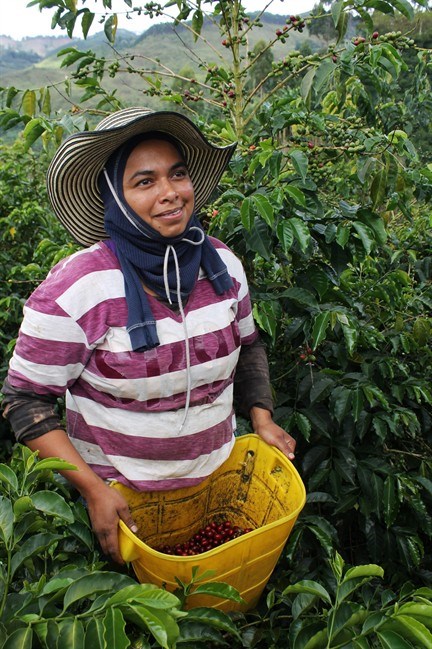Still think a $5 latte at Starbucks is over the top? Hold on, because now there's an even pricier cuppa Joe to get buzzed about.
These days caffeine fiends are all atwitter about Geisha beans, a high-end coffee so rare and prized it's being sold for $7 a cup. That's a lot of dough for a straight up cup of Joe, but worth it say fans of the beans which come from low-producing plants that grow only in certain areas.
"It's got unique aromatics. It's just rich with tropical fruits. It's got tremendous brightness in the cup — sweet and just super interesting stuff," says Ric Rhinehart, executive director of the Specialty Coffee Association of America, based in Long Beach, Calif. "Coffee people are just in love with it."
The beans emerged on the market about seven years ago and quickly got the attention of high-end roasters and coffee connoisseurs. Now, the coffee has moved toward the mainstream, being offered at Starbucks and sold by the pound by major companies, including Vermont-based Green Mountain Coffee, which recently introduced its Colombia Geisha Special Reserve coffee as part of its line of rare and premium beans.
Just don't expect this to become an everyday blend, says Lindsay Bolger, director of coffee for Green Mountain Coffee. "It can't because it's limited and obviously we're not going to be able to carry it year-round," she says. But when you "really are seeking a very singular, very unique, very rarefied experience with your coffee, this is such a wonderful and convenient way to bring that to coffee lovers.
Geisha beans originated in the Gesha (no "i'') district of Ethiopia, hence the name. There's no literal connection to the elegant Japanese hostesses, though Bolger sees a figurative affinity in that the coffee is "very delicate, pure, the flavour expression is refined, graceful, very lovely."
The plant was taken to Central America at some point and became a sensation during the last decade after a Panamanian farm, Hacienda La Esmeralda, offered the beans at auction.
James Freeman, founder of Blue Bottle Coffee, a small, upscale chain based in the San Francisco Bay area — it also has outlets in New York City — was among those who were impressed with Geisha coffee when it first emerged. The company now sells tins of beans as well as brewed coffee for around $7 a cup.
"We're getting a lot of great feedback about how distinctive it is," Freeman says. "A good Geisha is very much unlike any other coffee that you've ever had, so it's very memorable. It's not a subtle thing for connoisseurs only."
Why the high price tag? Not only does the Geisha plant produce relatively few beans, it's also very sensitive to soils and climate. Plant it in one spot and it's special, try another and it's just ordinary coffee, says Bolger. "It requires just the right conditions and it requires very careful handling."
At Green Mountain, the Columbia Geisha is being sold in 18-count boxes of K-cup packs at $31.99, which works out to about $1.80 per cup. Blue Bottle is selling 150-gram tins at $25, with each tin producing 8 to 10 servings.
The quest for super premium coffees mirrors what's been going on in other parts of the food world, such as the revival of heirloom tomatoes, says Rhinehart. "We're always looking for unique flavours or exceptional qualities."
What Freeman likes about the Geisha trend is that consumers are recognizing the name and getting interested in the concept of searching out different types of beans. "It's making people pay attention," he says. "It's not a 99-cent thing that comes out of a tap."
___
Online:
http://haciendaesmeralda.com/
http://www.bluebottlecoffee.net/
http://www.greenmountaincoffee.com/



